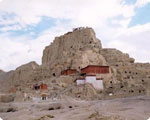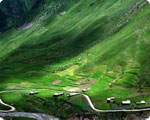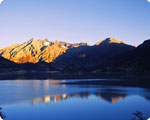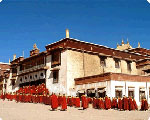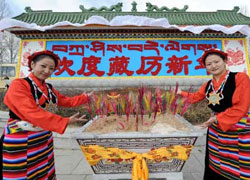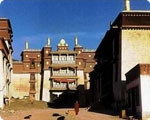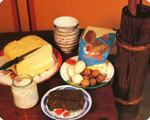Chamdo Travel Guide
Located in eastern Tibet, Chamdo prefecture is contiguous with Sichuan Province to the east, Yunnan Province to the south and Qinghai Province to the north. Chamdo has complicated geographic situations, different topographies, various climatic conditions and dense forests. Chamdo is dissected by Dricku River, Tsarchu River and Gyermo Nguchu River, which flow through the region.
Chamdo has a total population of 583,600, which accounts for 12% of the total population of Tibet Autonomous Region. Chamdo administrates 11 counties, 24 towns and 118 townships with twenty-one ethnic groups including Tibetan, Han (Chinese), Hui, Zhuang, Naxi, Lhoba, Moinba and Bai.
Around Chamdo, there are the splendid sceneries of “Sacred Mountain and Holy Lake” of the Buddhism, Hinduism and the indigenous religion-Bon. There are also sites and ancient monasteries, buildings, steles, such as the Chambaling Monastery, Kanuo Ruins in Chamdo. The rich folk customs, religious culture and local festivals are still alive today.
Chamdo Travel Guide
- Chamdo Maps
- Chamdo Climate
- Chamdo Location
- Chamdo Transportation
- Chamdo History
- Chamdo Attractions
- Shopping in Chamdo
- Entertainment
- Chamdo Festivals
- Ancient Tea-horse Road
- Chamdo Travel Tips
- Chamdo Facts
- Chamdo Tours
- Chamdo Pictures
Explore Tibet
- Why visit Tibet
- Best time to go
- Tibet travel permit
- Getting to Tibet
- Top sights of Tibet
- Reservation guide
- Tailor made a Tibet trip
- Travel tips
- Travel FAQ
Chamdo Transportation
Highway transportation is the main way to link Chamdo with other parts of Tibet and Yunnan, Sichuan, and Qinghai provinces. There are also flights connecting Chamdo with the major cities in China and Kathmandu, Nepal.
Local Transport
Taxes in the city seat 4 people. Generally, it costs RMB 10 in the city. The pedicabs are quite suitable for viewing the city. They seat 2 people, costing RMB 3 to 4 within the city.
Chamdo Attractions
Chamdo is the most colorful area in Tibet with vast grasslands, fertile fields in river valleys, flourishing semitropical jungles and snowfields at higher altitudes. The famous scenic spots include Xiqin Spring, Yatung Spring, Yongzelucuo Lake, Tashilumpo Monastery,
Chamdo Festivals
There are many folk festivals in Khamba region and in different areas people have their own special ways to celebrate. In general, Khamba region has its own characteristics compared with other areas in Tibet. For instance, the major festivals such as Shoton Festival and Wangguo Festival in regions like Lhasa are not celebrated in Khamba region.
It is the biggest traditional festival in Tibet. In Chamdo area, people begin to make the preparations for the New Year from early December of Tibetan calendar. Read more>
Top Recommended Tours :
- 4 Days Essence Tour of Lhasa from $449 USD
- 6 Days Tibetan Discovery Tour from $949 USD
- 8 day Travel on the Roof of the World from $1629 USD





